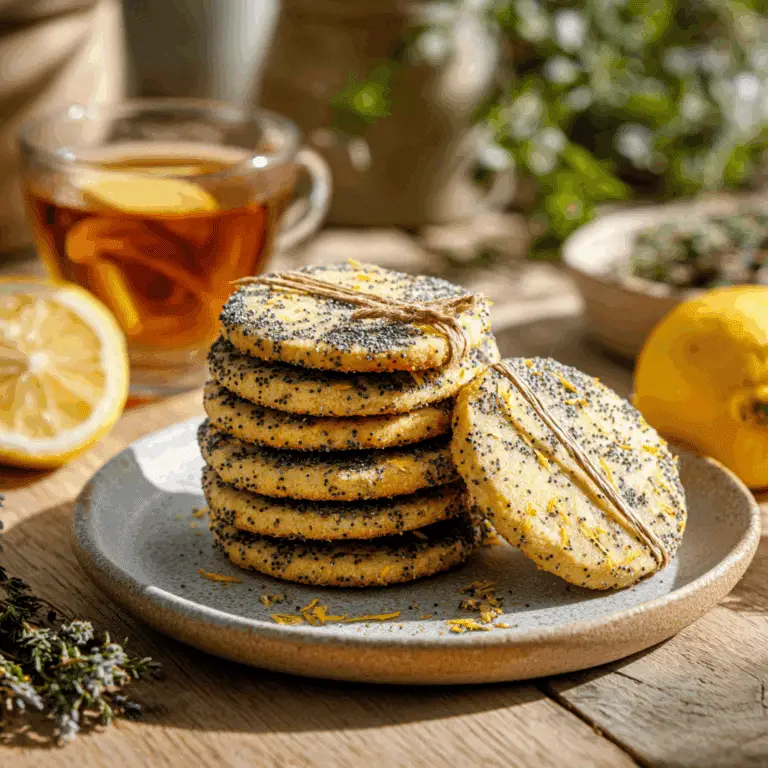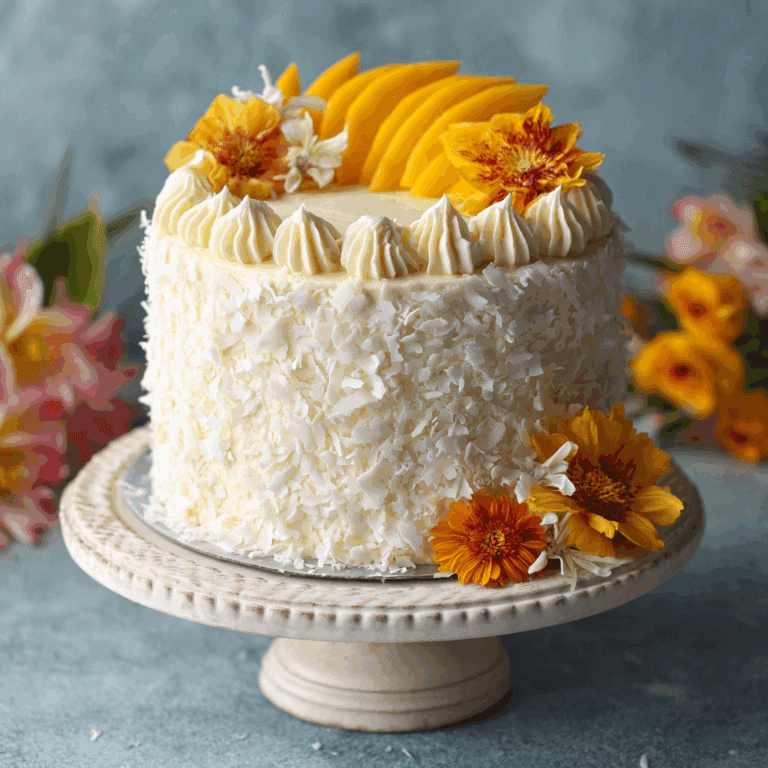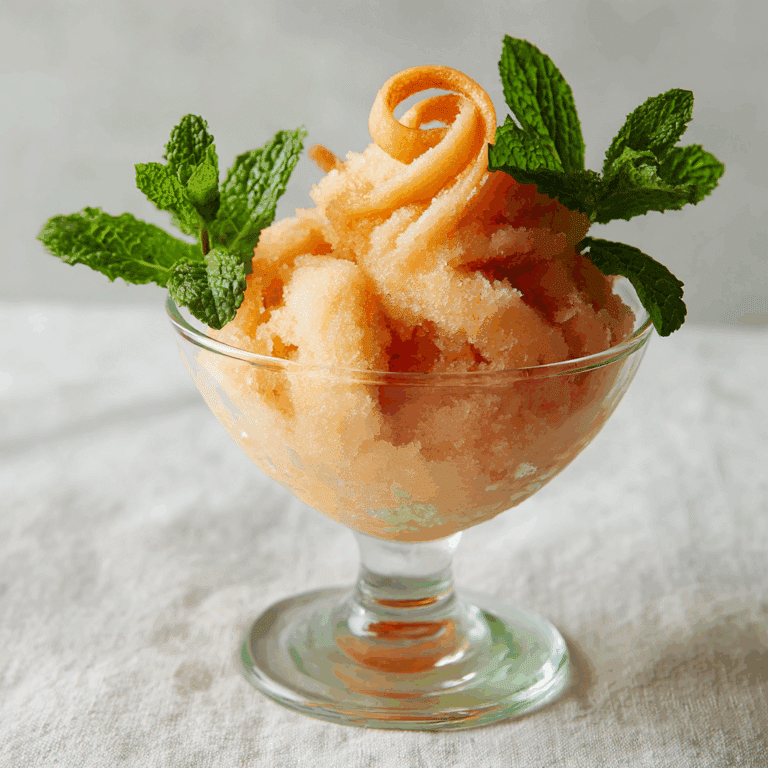Macarons with All-purpose Flour Recipe
If you have always adored delicate macarons but need—or want—a nut-free alternative, you are in for a treat! This recipe for Macarons with All-purpose Flour is a fantastic twist on the classic almond version. Using all-purpose flour instead of almond flour means you get those charming, colorful shells with a lovely tender bite and buttery buttercream filling, without worrying about nut allergies. It’s a fun, approachable way to master macarons while keeping the magic intact.
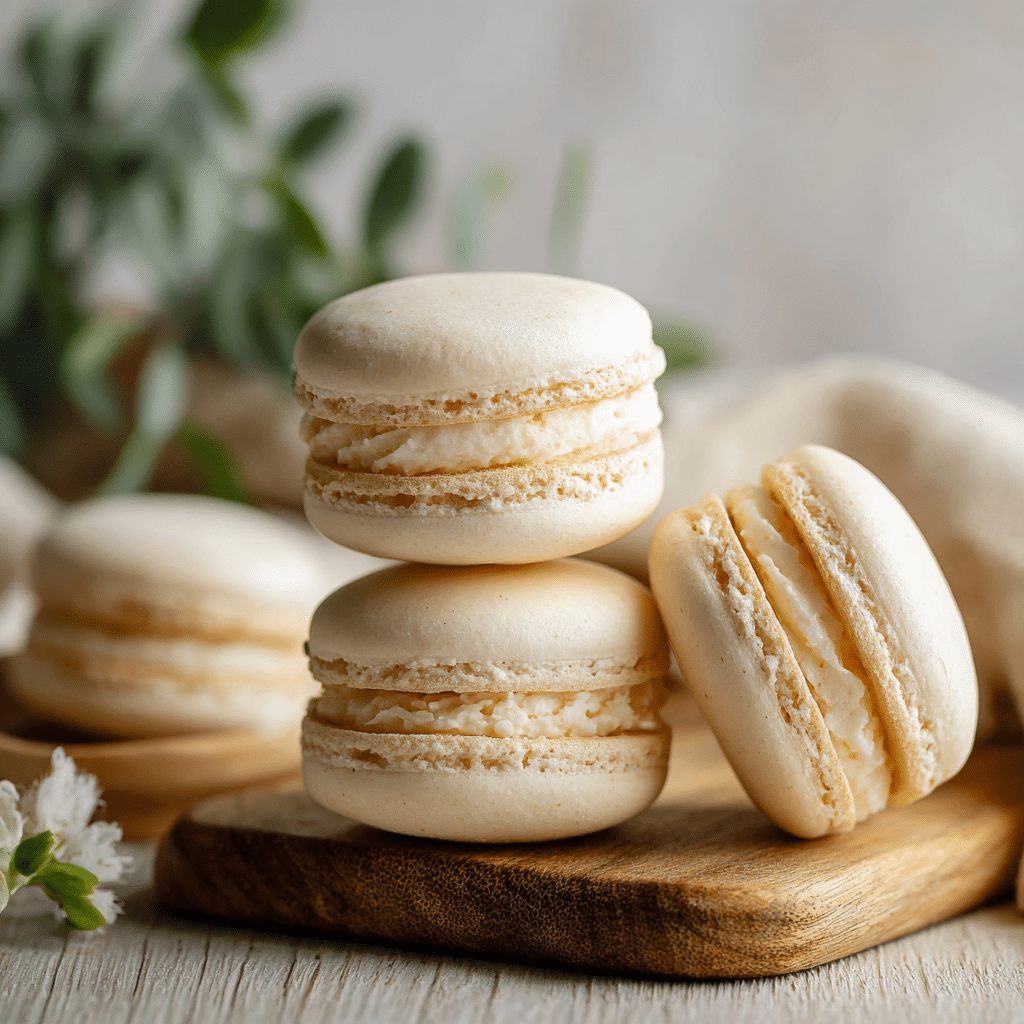
Ingredients You’ll Need
Making macarons might sound fancy, but the ingredients are actually quite simple and essential. Each one plays a crucial role—from the sugar’s sweetness to the flour’s structure—ensuring you get that picture-perfect texture and flavor every time.
- White granulated sugar: Adds the right sweetness and helps stabilize the meringue for glossy shells.
- Egg whites: The backbone of your meringue, whipping into stiff peaks to form the macaron’s signature delicate texture.
- All-purpose flour: This nut-free star ingredient replaces almond flour, giving structure to the shells without compromising on taste.
- Powdered sugar: Contributes softness and sweetness, blending perfectly with the flour for just the right shell consistency.
- Food coloring (optional): Brightens up your macarons for a playful pop of color, just make sure it’s gel or powder for the best results.
- Butter (softened): For that rich and creamy buttercream filling that complements the shells beautifully.
- Almond flour (for filling): Adds a subtle nutty flavor to the buttercream, enhancing the overall taste.
- Almond extract: A splash of this elevates the buttercream with a fragrant boost.
- Milk (optional): To adjust the buttercream consistency if needed, keeping it silky and easy to pipe.
How to Make Macarons with All-purpose Flour
Step 1: Prep Your Ingredients and Tools
Before you dive in, organize your ingredients and set up your tools. Grab a large piping bag with a round tip—about a quarter inch diameter is perfect. Line two baking sheets with parchment or silicone mats. And here’s a tip: wipe your bowls and utensils with vinegar to banish any grease that might sabotage your meringue.
Step 2: Sift Together Dry Ingredients
Sift the powdered sugar and all-purpose flour together thoroughly. This step ensures a smooth batter free of lumps, which is key to those smooth, crack-free shells.
Step 3: Make the Swiss Meringue
In a heatproof bowl placed over simmering water, whisk together egg whites and granulated sugar until the sugar dissolves completely. This gentle warming creates a silky meringue base. Then, whip the mixture with a stand mixer until stiff, glossy peaks form—this can take a bit of patience, but watching your meringue transform is simply magical.
Step 4: Folding in the Dry Ingredients (Macaronage)
Now for the delicate dance called macaronage. Gently fold the sifted flour and powdered sugar into the meringue using a spatula, adding your coloring if you wish. Be very mindful here—our batter with all-purpose flour behaves differently than the almond variety. It can go from firm to too runny in seconds. The trick is to fold just enough until the batter flows slowly in thick ribbons but don’t overmix or you’ll lose those lovely feet and get fragile tops.
Step 5: Piping and Resting the Shells
Transfer your batter into the piping bag and pipe rounds over your prepared sheets, directly onto any macaron template you have. Lightly tap the trays to release air bubbles, then pop any stubborn ones with a toothpick. Let the shells rest for 20 to 40 minutes to dry out—how long depends on humidity. You’ll know they’re ready to bake when the tops feel dry to the touch.
Step 6: Baking
Bake one tray at a time—about 15 to 20 minutes depending on your oven. It’s a bit of trial and error here since all-purpose flour macarons behave differently than traditional ones. Use an oven thermometer for accuracy and consider rotating your trays halfway to ensure even baking. After baking, let the shells cool completely before assembling.
Step 7: Making the Almond Buttercream
Beat softened butter until fluffy, then gently mix in powdered sugar and almond flour. Add almond extract for that signature flavor. If the buttercream is too stiff, thin it with a bit of milk. For a fun twist, split the buttercream and add red coloring to half before rolling it together for a bicolor effect in your filling.
Step 8: Assemble Your Macarons
Pipe the buttercream onto the flat side of one shell, then sandwich with another. Store your completed macarons in an airtight container in the fridge to let the flavors meld beautifully.
How to Serve Macarons with All-purpose Flour
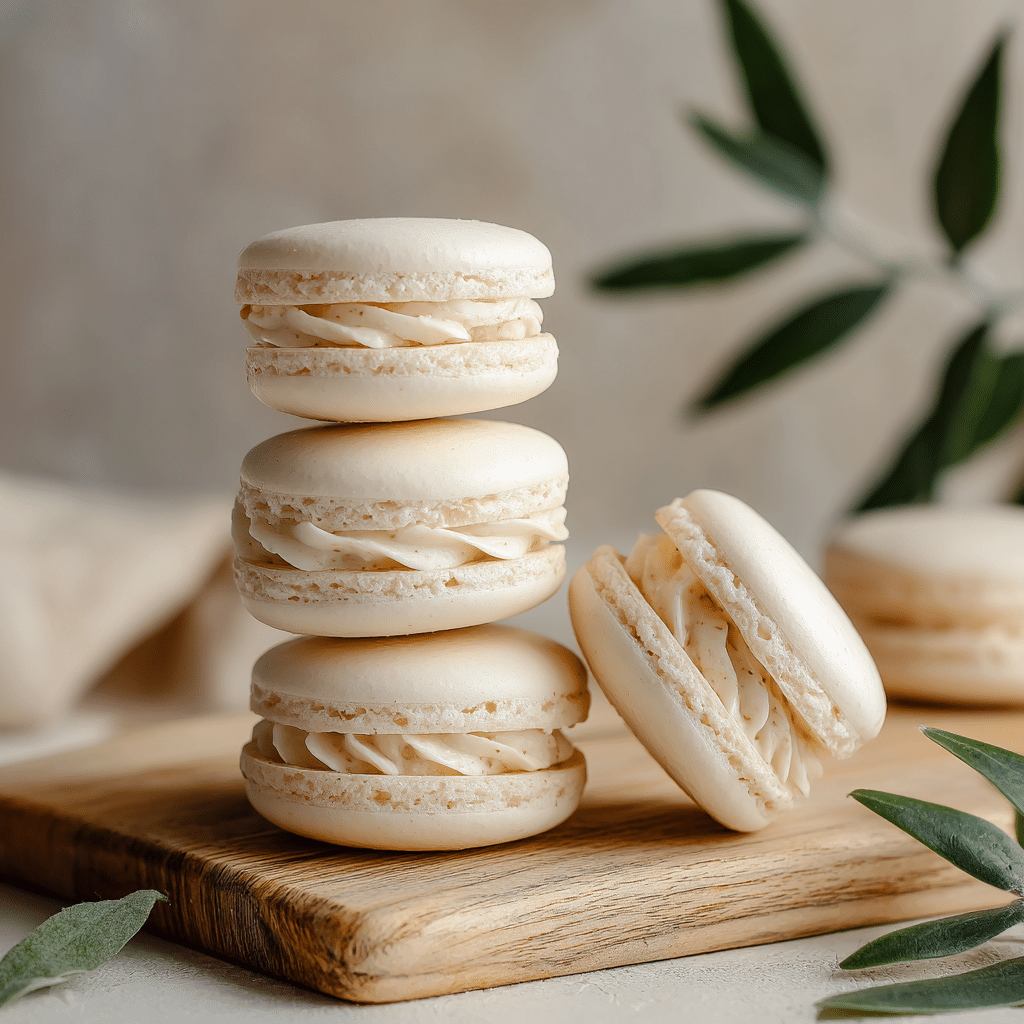
Garnishes
To make your macarons truly stand out, try airbrushing with heart-shaped stencils or dusting with a light sprinkle of edible glitter. Flower petals or a dusting of powdered sugar are also sweet touches that add elegance and charm to your presentation.
Side Dishes
Pair these delicate treats with a cup of fruity tea or a smooth espresso to balance the sweet richness. Fresh berries or a sorbet on the side can add refreshing notes that complement the buttery filling and tender shells wonderfully.
Creative Ways to Present
Arrange macarons in colorful towers for a dazzling display or nestle them in pretty gift boxes adorned with ribbons for hostess gifts or party favors. You could even arrange them by color gradient on a platter for an eye-catching centerpiece that will wow guests.
Make Ahead and Storage
Storing Leftovers
Unfilled shells keep beautifully in an airtight container in the fridge for up to five days. This means you can bake ahead and fill them fresh later—a real timesaver for busy hosts.
Freezing
Freeze shells or assembled macarons for up to two months in airtight containers. Just thaw them gently in the fridge overnight so they keep their delicate texture and flavor.
Reheating
Macarons are best enjoyed chilled, but if you prefer them slightly soft, leave them at room temperature for 20 to 30 minutes before serving. Avoid microwaving since this can make the shells soggy or overly chewy.
FAQs
Can I substitute almond flour with all-purpose flour for macarons?
Absolutely! This recipe is designed specifically for Macarons with All-purpose Flour, making it a fantastic option for those with nut allergies or simply wanting a new twist on a classic.
Will using all-purpose flour change the texture of my macarons?
Yes, the texture will be slightly different—softer and tender rather than chewy, but just as delightful. The baking process requires some tweaks to account for all-purpose flour’s unique behavior to achieve perfect feet and smooth tops.
Is resting the macaron shells before baking necessary?
Resting helps form a skin that prevents cracking and creates those iconic feet. With all-purpose flour macarons, resting times might vary, so check that the surface feels dry before baking or try the no-rest method if your oven is consistent.
Can I use liquid food coloring in this recipe?
It’s best to avoid liquid food coloring as it can alter the batter’s consistency. Gel or powder food coloring is recommended to maintain the perfect texture while achieving vibrant colors.
How do I know if my macaron batter is overmixed?
With all-purpose flour macarons, batter can quickly go from thick to too runny. Watch for when the batter flows slowly in ribbons and folds back into itself without breaking apart completely. Overmixed batter results in flat or spreading shells and fragile tops.
Final Thoughts
Making Macarons with All-purpose Flour is such a rewarding baking adventure that opens the macaron world to more people, especially those avoiding nuts. With a little patience and careful attention to technique, you can create stunning, delicious macarons that taste just as special and bring smiles to every table. So don your apron, invite a friend over, and get piping—you’re about to discover a whole new favorite dessert!

